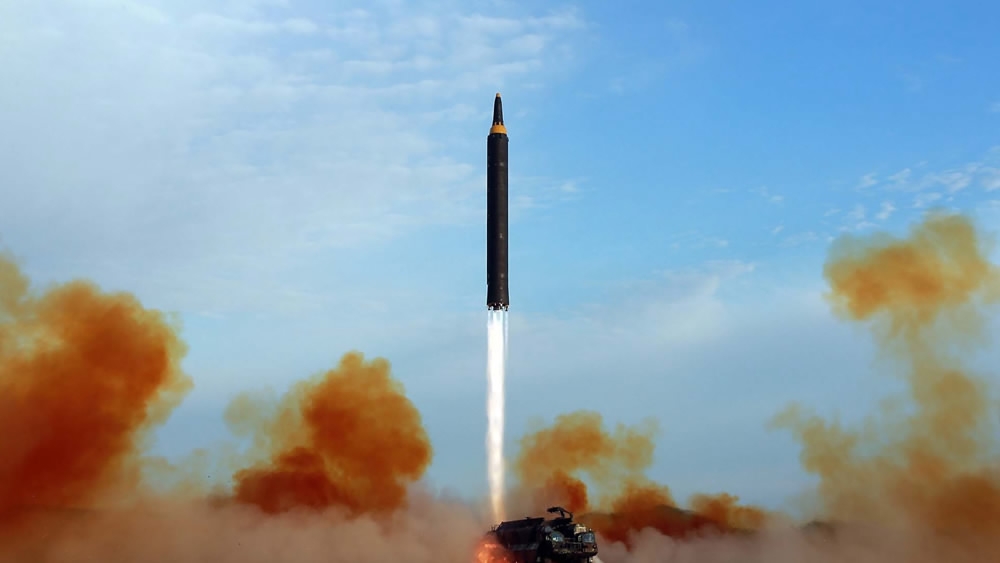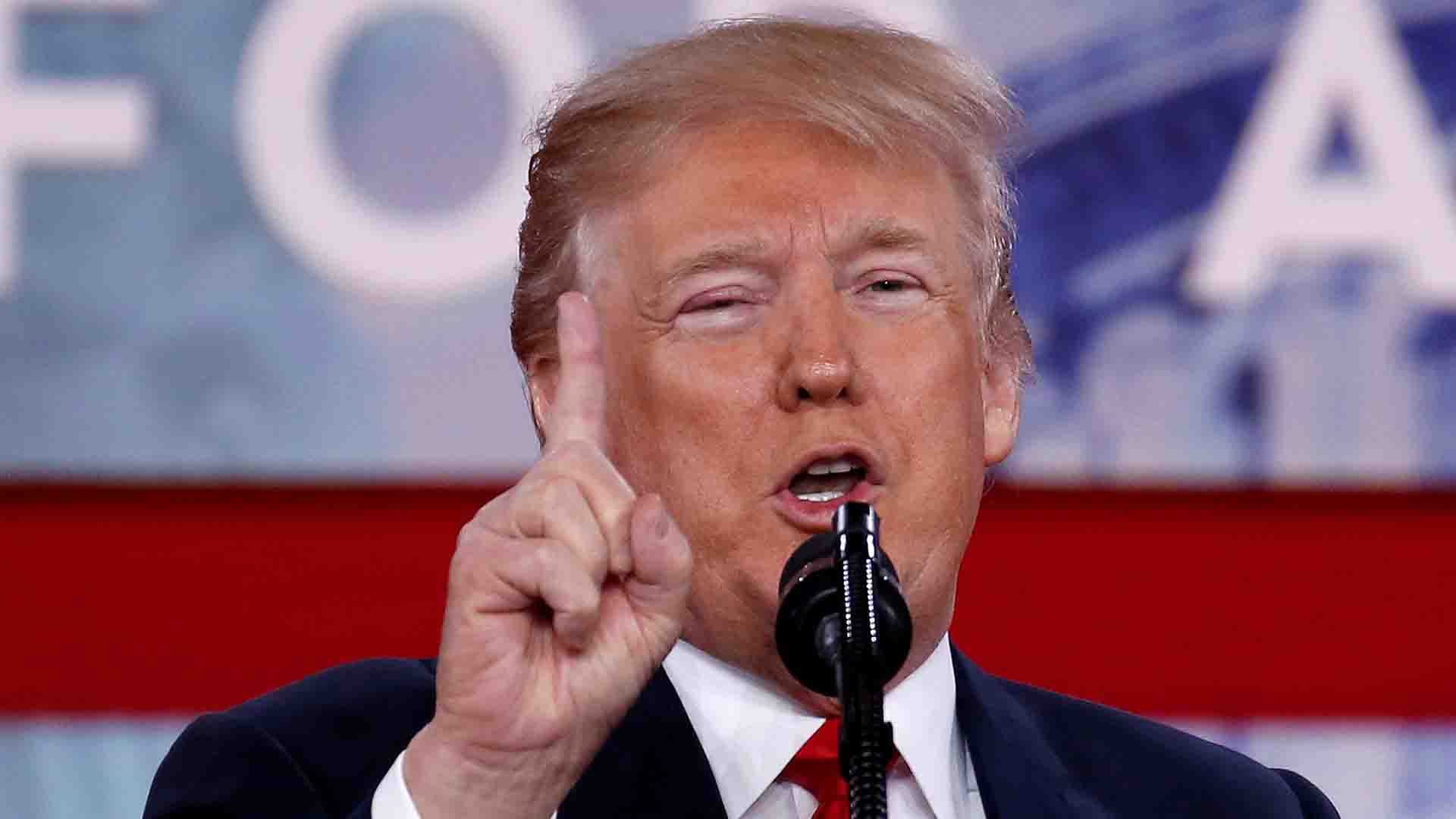US President Donald Trump announced the latest sanctions on the Democratic People's Republic of Korea (DPRK) on Friday, calling them the "
heaviest sanctions ever" levied on Pyongyang.
Nevertheless, whether the new move would help denuclearize the Korean Peninsula is far from certain, given the fact that previous sanctions imposed by the United States and the United Nations Security Council
have failed to deter Pyongyang from upgrading its nuclear and ballistic missile programs.
Below is a timeline of the previous attempts by the US and UN Security Council to limit the DPRK's nuclear ambitions.
US President George H. W. Bush v. DPRK leader Kim Il Sung
March 1992: The US imposed sanctions on the DPRK's Lyongaksan Machineries and Equipment Export Corporation and Changgwang Sinyong Corporation for alleged missile proliferation activities.
US President Bill Clinton v. DPRK leader Kim Jong Il
May 1996: The US imposed sanctions on the DPRK for missile technology-related transfers, prohibiting any imports or exports to sanctioned firms and to those sectors of the economy that are considered missile-related.
August 1997: The US imposed new sanctions on two additional DPRK entities for unspecified missile-proliferation activities.
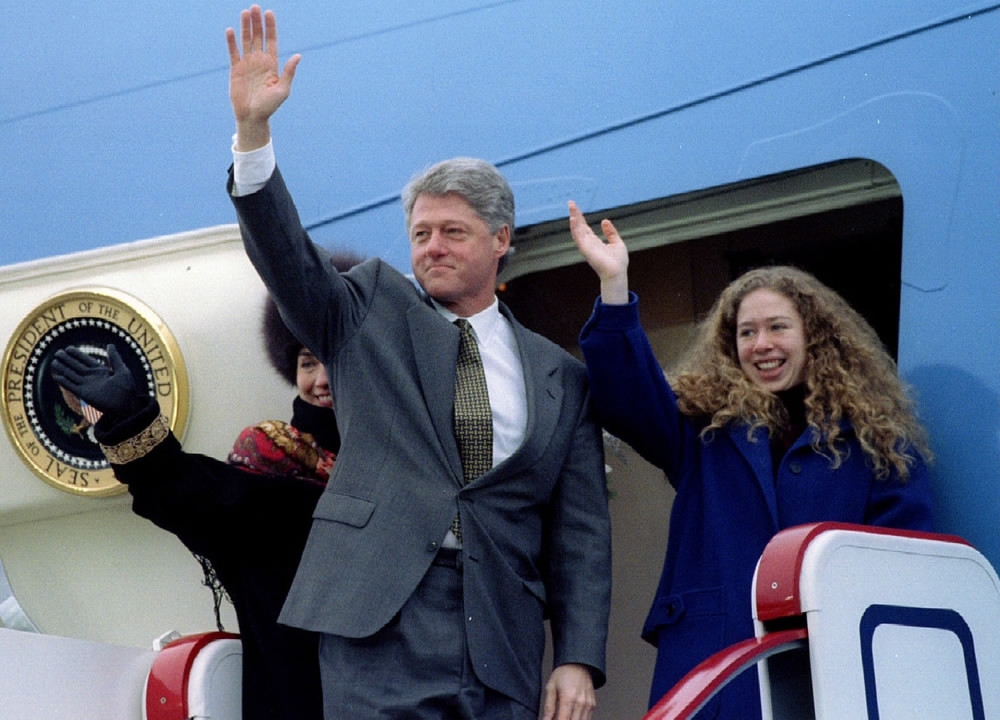
Former US President Bill Clinton (C). /VCG Photo
Former US President Bill Clinton (C). /VCG Photo
April 1998: The US imposed sanctions on the DPRK in response to Pyongyang's alleged transfer of missile technology and components to Pakistan's Khan Research Laboratory.
April 2000: The US imposed sanctions on the DPRK's Changgwang Sinyong Corporation for allegedly proliferating MTCR Category I items (missile technology and systems) to Iran.
January 2001: The US imposed sanctions on the DPRK's Changgwang Sinyong Corporation for alleged violation of the Iran Nonproliferation Act of 2000.
US President George W. Bush v. DPRK leader Kim Jong Il
June 2001: The US imposed sanctions under the Iran Nonproliferation Act of 2000 on the DPRK's Changgwang Sinyong Corporation for unspecified missile-related transfers to Iran.
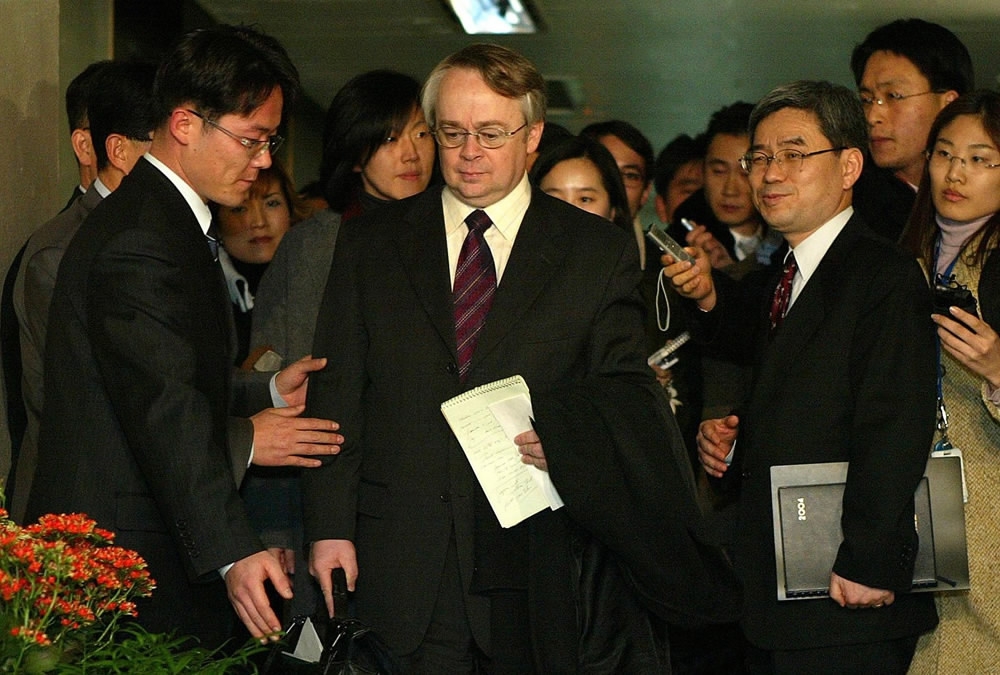
January 12, 2004: Frank Jannuzi (C) and Keith Luse (L), US Senate Foreign Relations Committee aides who visited the Yongbyon nuclear facility in the DPRK, meet with Republic of Korea (ROK) Unification Ministry officials in Seoul, ROK. /VCG Photo
January 12, 2004: Frank Jannuzi (C) and Keith Luse (L), US Senate Foreign Relations Committee aides who visited the Yongbyon nuclear facility in the DPRK, meet with Republic of Korea (ROK) Unification Ministry officials in Seoul, ROK. /VCG Photo
August 2002: The US imposed sanctions on the DPRK's Changgwang Sinyong Corporation and the DPRK government for allegedly transferring missile technology to Yemen.
March 2003: The US imposed sanctions on the DPRK's Changgwang Sinyong Corporation for allegedly transferring missile technology to Pakistan's Khan Research Laboratory.
July 2006: The UN Security Council adopted Resolution 1695 condemning the DPRK's missile launches. The resolution requires states to prevent missiles and related "items, materials, goods and technology" from being transferred to the DPRK's missile or weapons of mass destruction programs.
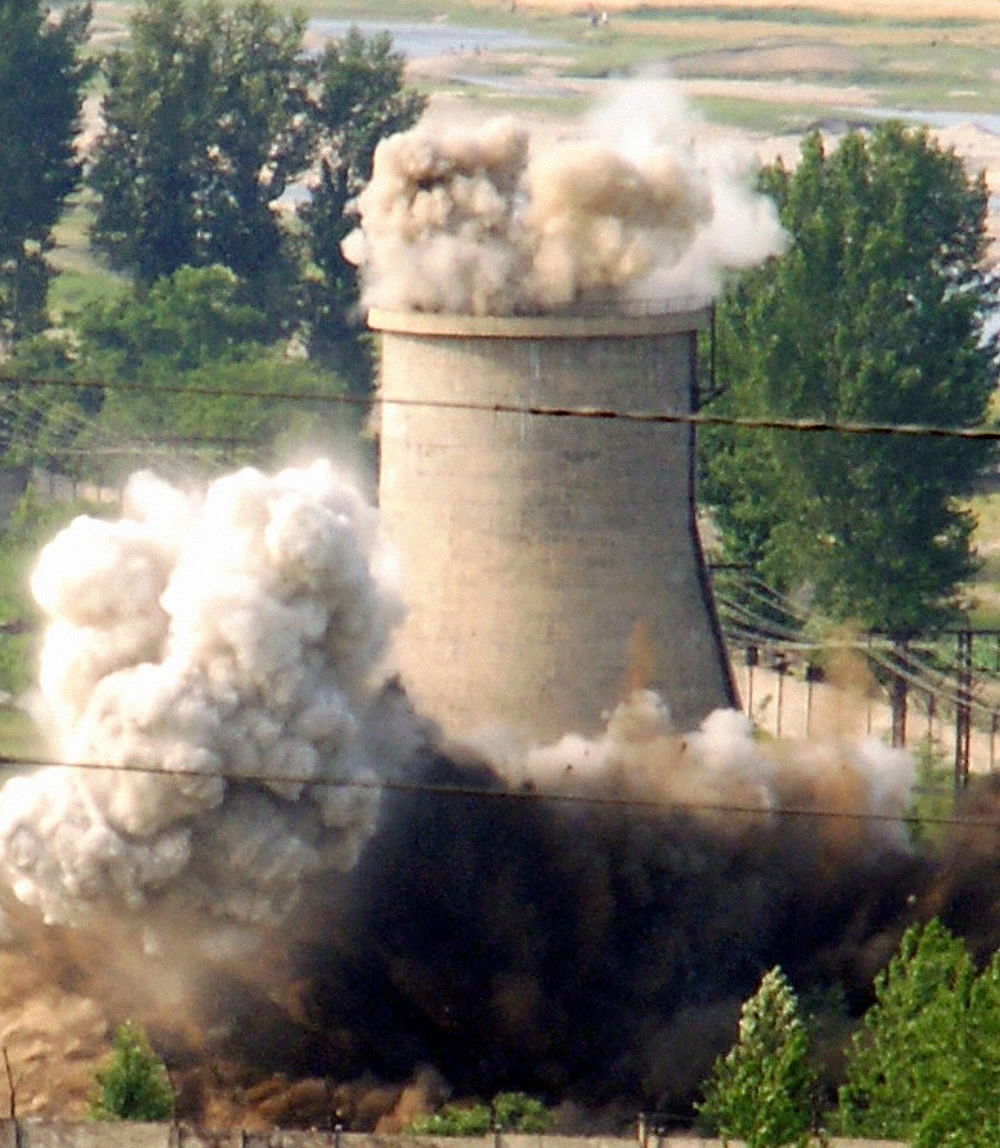
June 27, 2008: The DPRK demolishes a cooling tower at Yongbyon nuclear reactor, as a sign of good faith in negotiations. /VCG Photo
June 27, 2008: The DPRK demolishes a cooling tower at Yongbyon nuclear reactor, as a sign of good faith in negotiations. /VCG Photo
October 2006: In response to the DPRK's first nuclear test, the UN Security Council adopted Resolution 1718, which imposes additional sanctions on commerce with Pyongyang, prohibiting the export to the DPRK of some military supplies and luxury goods.
US President Barack Obama v. DPRK leader Kim Jong Il
June 2009: In response to the DPRK's second nuclear test, the UN Security Council adopted Resolution 1874, which broadens the arms embargo to the country and encourages member states to inspect the DPRK's ships and destroy any cargo suspected of being related to the nuclear weapons program.
July 2010: The US imposed sanctions against Pyongyang for its involvement in the sinking of the Republic of Korea ship the Cheonan.
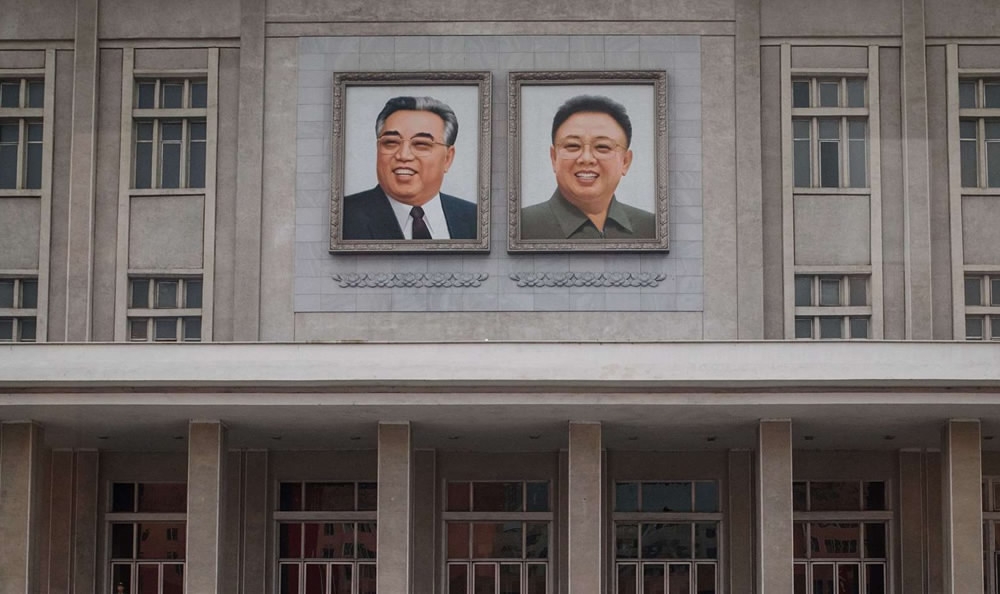
October 8, 2015: The portraits of late DPRK leaders Kim Il Sung (L) and Kim Jong Il (R) are displayed on the facade of a building in Pyongyang. /VCG Photo
October 8, 2015: The portraits of late DPRK leaders Kim Il Sung (L) and Kim Jong Il (R) are displayed on the facade of a building in Pyongyang. /VCG Photo
US President Barack Obama v. DPRK leader Kim Jong Un
January 2013: In response to a satellite launch by the DPRK, the UN Security Council adopted Resolution 2087, which strengthens and expands existing sanctions put in place by the earlier resolutions and freezes the assets of additional DPRK individuals and people.
March 2013: In response to the DPRK's third nuclear test, the UN Security Council adopted Resolution 2094, which imposes sanctions on money transfers to the DPRK, aiming to shut the country out of the international financial system.
January 2015: The US expanded sanctions on DPRK entities and individuals, some of which are allegedly involved with Pyongyang's nuclear and ballistic missile programs.
February 2016: The US Congress passed its first statute imposing sanctions on the DPRK, requiring the president to sanction anyone who engages in the proliferation of weapons of mass destruction.
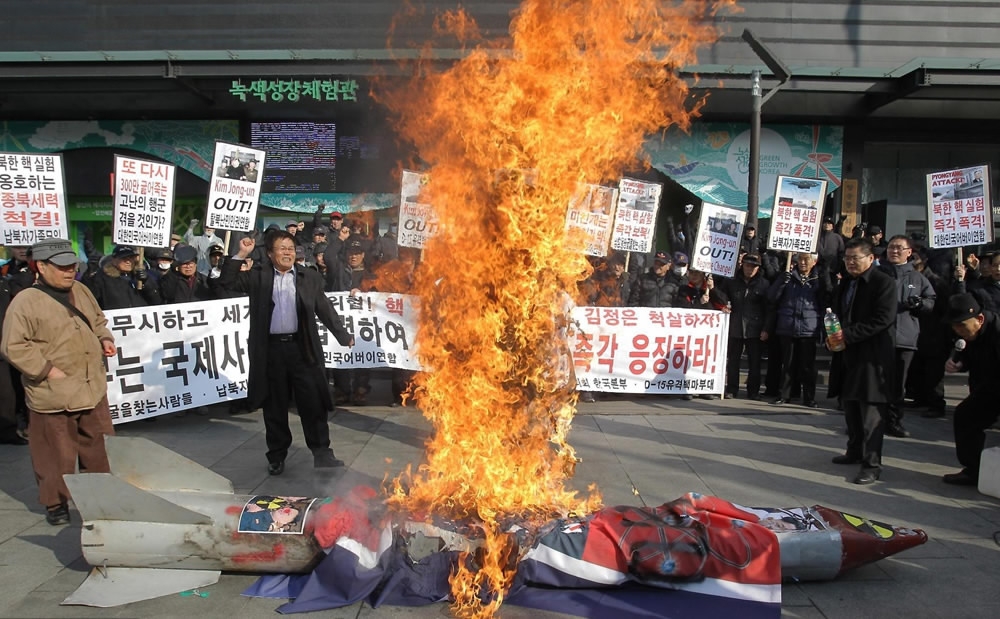
February 13, 2013: South Korean protesters burn a DPRK flag and effigy of DPRK leader Kim Jong Un in Seoul a day after Pyongyang announced they have conducted a third nuclear test. /VCG Photo
February 13, 2013: South Korean protesters burn a DPRK flag and effigy of DPRK leader Kim Jong Un in Seoul a day after Pyongyang announced they have conducted a third nuclear test. /VCG Photo
March 2016: In response to the DPRK's fourth nuclear test, the UN Security Council adopted Resolution 2270, which bans the export of gold, vanadium, titanium, and rare earth metals to the DPRK. The export of coal and iron is also banned, with an exemption for transactions that were purely for "livelihood purposes."
November 2016: The UN Security Council adopted Resolution 2321, which caps the DPRK's coal exports and bans exports of copper, nickel, zinc, and silver.
US President Donald Trump v. DPRK leader Kim Jong Un
July 2017: The US government bans Americans from visiting the DPRK from September 1, in response to the
death of tourist Otto Warmbier.
August 2017: In response to the DPRK's
tests of intercontinental ballistic missiles (ICBMs), the UN Security Council adopted Resolution 2371, which bans all exports of coal, iron, lead, and seafood to the DPRK, imposes new restrictions on the DPRK's Foreign Trade Bank and prohibits any increase in the number of DPRK nationals working in foreign countries.
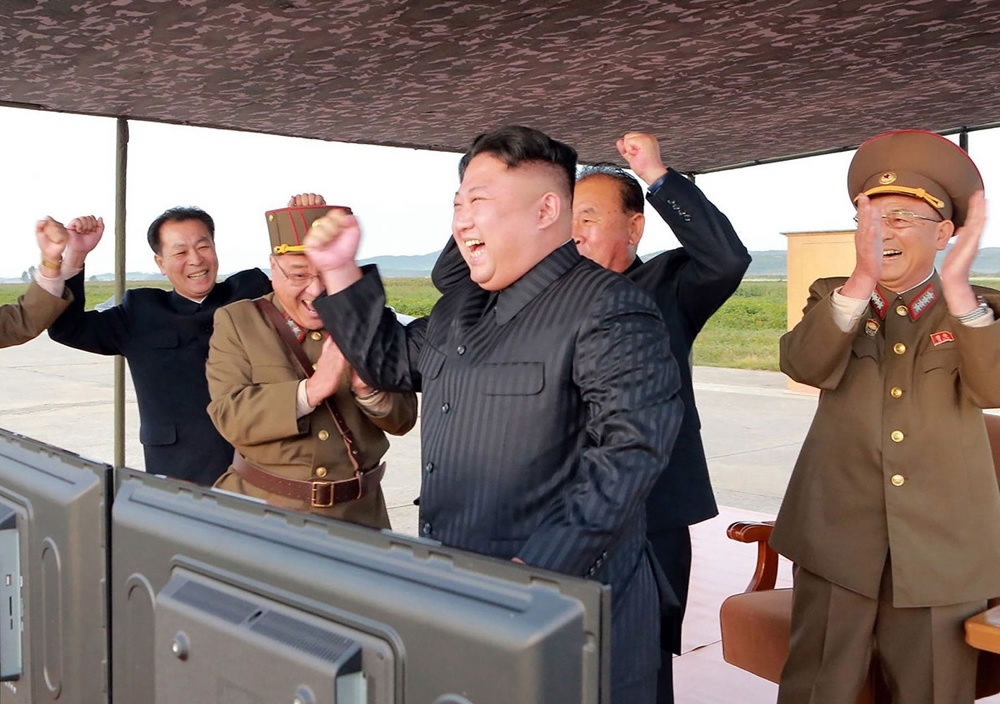
September 2017: DPRK leader Kim Jong Un (C) inspects a launching drill of medium-and-long range strategic ballistic rocket Hwasong-12. /VCG Photo
September 2017: DPRK leader Kim Jong Un (C) inspects a launching drill of medium-and-long range strategic ballistic rocket Hwasong-12. /VCG Photo
September 2017: In response to the DPRK's hydrogen bomb test, the UN Security Council adopted Resolution 2375, which
imposes additional sanctions on the DPRK, including a ban on textile exports and a cap on refined petroleum product imports.
September 2017: Trump authorized the US Treasury Department to block any foreign business or individual that facilitates trade with the DPRK from the US financial system. Trump also issued an executive order banning entry of DPRK nationals to the US.
October 2017: The US imposed additional sanctions on the DPRK affecting seven individuals and three entities, following the DPRK's abduction of a fishing vessel belonging to the Republic of Korea (ROK).
February 2018: The US imposed sanctions on one person, 27 companies and 28 ships over the DPRK's nuclear and ballistic missile programs, prohibiting US citizens from dealing with them.

